#tree health specialist
Explore tagged Tumblr posts
Text
Winterizing Your Trees: Top Tips for a Flourishing Garden
The onset of winter weather is imminent, and you won’t be the only one who needs to wear warm clothing. It is imperative that you get your trees ready. If you do not, you run the chance of them breaking, falling, or simply being an eyesore in your yard. Therefore, you should contact Tree Health Care San Diego if you need tree care. In light of this, you will need to adhere to the specific guidelines for winter trees to shield them from frost and maintain their viability. An excellent place to begin is by performing light pruning and applying mulch. It would be best if you continued to water them and keep the snow off the branches. In addition, you should take precautions to keep animals away. These are just a few elementary steps to follow.
The Advantages of Strong Trees
Trees have a tremendous impact on how our environment is shaped and confer many benefits on individuals and communities worldwide. Trees in Minnesota offer much more than only giving much-needed oxygen; in addition, they provide much-needed shade for homes and businesses and homes for a broad range of native species. In other words, trees in Minnesota serve several purposes.
During the warmer months of the year, trees act like enormous parasols, shielding a neighborhood from the sun’s direct rays and lowering the air’s temperature. In addition to their usage in natural landscaping, trees are frequently used in architectural design as ornamental features. In either scenario, trees’ continuing vitality and healthy development are essential for them to carry out their responsibilities.
On the financial side of things, it has been suggested that the worth of a house is higher when it has been adequately planted with trees and that this contributes to an increase in the value of the home. Are you familiar with the facts regarding trees and the imperative that it is to look after their health throughout the winter? Even though winter may appear to be an odd time to care for trees and may even be an uncomfortable season, there are several benefits to performing this activity at this time of year. We have compiled five tried-and-true approaches to tree healthcare to ensure your trees continue to thrive and remain healthy throughout the season.
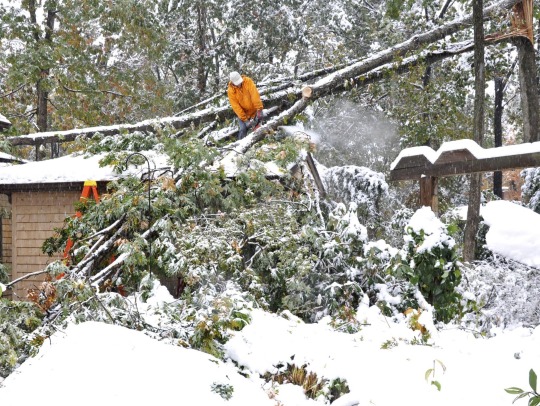
Advice for Caring for Trees in the Wintertime
One thing that property and company owners should remember to do throughout the winter is to take care of their trees by managing any necessary pruning that needs to take place. It is recommended that you prune your tree during the winter months because this is when deciduous trees are dormant, and it is not the growing season for these trees. Because all the leaves have fallen off during the winter, you can easily access different regions of the tree and see precisely where you need to prune. It makes winter an ideal time for tree pruning.
Advertisements
about:blank
REPORT THIS AD
Pruning trees in the winter reduces the risk of inflicting fatal wounds on the trees, which may occur if the pruning were performed in the spring. When trees are pruned during the growing season, also known as the warm weather seasons, the resulting wounds and the sap that flows from them can become breeding grounds for a wide variety of pests and diseases that are harmful to the tree’s health.
Take Good Care of Young Trees
During the winter, young and newly planted trees are typically more susceptible to damage. Considering that these young trees have yet to develop their root systems, it may not be easy to care for them in the future.
It would help if you tended to your young trees and bushes now that the weather has turned chilly since they will have to survive a winter that is likely to be bitterly cold, snowy, and even icy. You may help safeguard the safety of young trees over the winter by cabling them, so they remain upright. It will reduce the risk of damage to the trees. The snow and ice may bring down your young tree because they are such powerful forces.
In addition to that, make sure that you put a plastic guard around the trunk of the tree or a wire fence around it so that rabbits and deer won’t eat it. Because of this damage, the tree may eventually perish. It is also helpful to prevent winter burn on the growth of your shrubs by wrapping them in burlap or cotton before winter arrives.
Stay Away From Using Salt Near Any Trees
It would help if you didn’t use salt anywhere near your trees, as the snow and ice accumulate over the winter months. Even while salt is an effective tool for melting ice on sidewalks and driveways, using it in the immediate area could hurt the trees.
Salt will end up causing damage to your tree’s roots and trunks since it will inhibit the tree from obtaining the critical nutrients for life and nutrition that it needs from the soil. Use sand or a natural de-icer that does not contain salt as an alternative to salt.

Conduct Frequent Inspections of Your Trees
Residents in Minnesota are well aware of how rapidly the weather may shift. It is crucial to check on your trees and bushes whenever there is a snowstorm or other type of winter storm. If there is a significant accumulation of snow on either of these, you may damage your tree or your house considerably. Ensure that you keep a close eye on your trees and the structure of their trunks and branches throughout the winter season.
Retain the Services of a Qualified Arborist
Last but not least, one of the most valuable pieces of advice we can provide regarding the care of trees during the winter is to contract the services of an expert to carry out the activities of winter tree removal and pruning. Although there are circumstances in which it may be OK for you to do some duties related to winter tree care on your own, it is prudent to delegate the more significant projects to professionals.
Professional arborists have access to specialized equipment and a wealth of knowledge, making them the best choice for many aspects of tree maintenance, including but not limited to the removal of trees and trimming branches located at greater heights on trees. Get in touch with a tree care provider to ensure your property’s trees receive the attention they need this winter.
Superior Tree Maintenance During the Winter
Do you plan to take care of your trees and ensure they remain healthy this winter? Dial the Professional Tree Care Services number right away. Professional arborists at Tree Doctor USA have extensive experience and training in applying vital tree care services to residential properties.
Original Source: How to Care for Happy and Healthy Tree in The Winter
#tree doctor#tree disease specialist#tree doctor usa#tree healthcare#tree health specialist#family tree healthcare#tree treatment#sick tree treatment
2 notes
·
View notes
Text
Finding the Best Certified Arborist Near Me in Amarillo, TX
Trees are not just tall, stately elements of our environments; they are bio individuals that deserve professional attention. As much as tree maintenance is concerned, it is important that I get the best certified arborist near me for trees to be healthy, safe and looking great. In Amarillo, TX, tree care is not simply the act of pruning branches or removing a tree that has fallen — it is about preserving the life of the trees that are so important to the overall looks and health of your property.
Why You Need a Certified Arborist
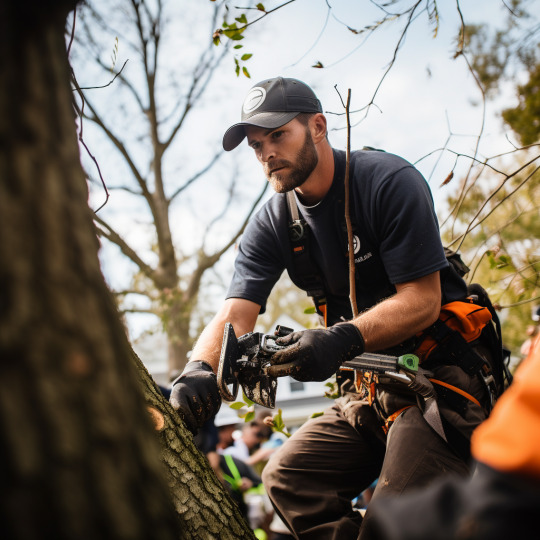
Certified arborist is a tree worker who received advanced training and passed examinations of the International Society of Arboriculture (ISA). These are professionals who know all about trees, how to diagnose diseases, how to deal with pests, and how and when to prune or even take down a tree.
Here are some key reasons why choosing the best certified arborist near me is critical:
1. Expert Knowledge and Training
Arborists that have been certified are knowledgeable in tree biology, health and safety. They understand the early symptoms of disease, infestation, and other problems that may be invisible to a layman. When you hire a professional who is a certified arborist you are certain that your trees are well taken care of.
2. Safety and Liability
Tree removal or pruning can be a risky job, especially where the trees are big or the area is hard to access. Such tasks must, however, be carried out by accredited certified arborists who know the right equipment and techniques to use in order to avoid accidents. Further, since a qualified arborist will work at your premise, you are protected against any mishap that may happen as the tree is being trimmed, or any property damage that may occur during the exercise.
3. Long-Term Tree Health
Arborist services are not only about current tree care but also about the future of your trees and how to maintain them. A certified arborist will give preventive measures which include disease control and appropriate methods of pruning so that the tree can be made to live longer and also keep your compound safe and attractive.
4. Environmental Benefits
Another major beneficiary is the ecosystem itself; trees give us oxygen, shade and act as home to wildlife. When you hire a certified arborist you are helping to conserve the environment because you are assured that the trees you have planted will remain healthy and green in the future.
Services Offered by Certified Arborists in Amarillo, TX
When looking for the best certified arborist services in Amarillo, TX it is important that the company provide a wide array of services for your tree needs. Here are some of the essential services that certified arborists provide:
1. Tree Pruning and Trimming
Tree pruning is important in order to keep the trees healthy and neat for a long time. A certified arborist will prune the tree to get rid of the dead or diseased branches to avoid rotting of the tree.
2. Tree Removal
Although it is one of the last things to consider in tree management, it becomes inevitable when a tree poses a threat to lives and property due to diseases, structural decay or close proximity to buildings.
3. Stump Grinding
Once a tree has been cut, the stump that is left behind is usually an eye sore and a tripping hazard. There are other services from arborists in that they can help you to grind the stump off so that you can have full use of the yard again.
4. Tree Health Assessments
Professional tree surgeons are also able to assess the general health of your trees and may be able to detect any signs of disease, pest or diseases or structural issues. It is recommended that these problems be detected as early as possible to avoid expensive harm and maintain the trees.
Choosing the Best Certified Arborist in Amarillo, TX
But how do you find a reputable certified arborist in Amarillo, TX? Here are some tips to guide your decision:
1. Make Sure It Is Certified and Insured
Be sure to hire an ISA-certified arborist, and make sure he or she is insured. This ensures they are well trained for the job and that you are shielded from any compensable losses just in case of an incident.
2. Look for Experience
This means that experience plays a critical role in determining the kind of tree care to be offered to a tree. You should ask the arborist the length of time they have been working and whether they used to work with the specific trees that you have.
3. Read Reviews and Ask for References
Read about the arborist’s previous work by searching online to know the kind of person they are. Also, it is helpful to request contacts of former clients to determine that the work done conforms to their quality.
4. Request a Detailed Estimate
First of all, demand a written estimate of the cost of a particular job or service. Reputable arborist should be able to give you a breakdown of the costs of different services, or at least give you an estimate of what is going to be done.
#Certified Arborist#Tree Care Professional#Arboriculture Expert#Tree Maintenance Certification#Tree Health Specialist
0 notes
Text
Callery Pear Tree Invasive Species
Callery pear trees (Pyrus calleryana), native to China and Vietnam, have been popular ornamental trees for almost 200 years. These trees were introduced to the United States in the 1800s and are often planted along streets and sidewalks because of their attractive form and coloration. This species is also known for its disease resistance (particularly fire blight resistance.) However, Callery pear tree is an invasive species, so much so that nurseries will no longer be allowed to sell the plant in Pennsylvania in 2024.

Callery Pear Tree Appearance
Callery pear has a distinctive appearance with crucial aspects that can help homeowners and plant health care experts quickly identify the plant.
Size: Callery Pear trees typically grow to around 16 to 26 ft tall, or approximately 5 to 8 meters, often with a conical to rounded crown.
Leaves: The leaves are oval-shaped and about 1-1⁄2 to 3 inches long, with a dark green color in early spring before the leaves turn yellow, orange, or red in the fall.
Flowers: The flowers are white and grow in clusters, have about five petals, and are about 3⁄4 to 1 inch in diameter.
Fruits: The fruits of the Callery pear are small, less than 3⁄8 of an inch in diameter. In addition, the fruits have a rugged, almost woody feel but are softened by frost, after which birds readily consume them.
Damage Caused by Callery Pear
Callery pear trees are invasive plants in many parts of the country and have damaged the landscapes and gardens of Pennsylvania homeowners. One of the significant reasons Callery pears cause so much damage is how the trees grow. These trees form dense thickets which displace native plants and animals. The dense thickets push out native trees or other plants that may compete with the Callery pear for water, soil, and space.
In addition, some cultivars (a type of cultivated plant that people have selected for desired traits), such as the ‘Bradford pear,’ are susceptible to storm damage, becoming disfigured or killed by strong winds and winter weather. So there is also a risk of the branches falling during strong winds and storms and damaging other things around the tree, like property or people.
What Makes Callery Pear an Invasive Plant
Like other species of plants we have discussed in this series, Callery pear has many qualities that enable the tree to spread quickly. One primary reason is the fruits discussed previously. The tree species produce large quantities of fruits that birds consume, and then those birds fly and relocate to new areas, passing the seeds in droppings into the soil, allowing new Callery pear trees to grow.
What makes Callery pear unique among the other invasive plant species we have talked about is the role of cultivars in spreading its population. Cultivars were initially bred to produce sterile fruit. However, different varieties can cross-pollinate, which results in viable seeds. When these cultivars grow close enough to each other to cross-pollinate, the trees produce fertile seeds that can sprout once dispersed.
Treating & Controlling Callery Pear
Callery pear can be challenging to control, but some methods exist for managing or removing the population from a landscape.
Small plants and their roots can be removed by hand, but larger trees require more extensive removal with specialized equipment, and herbicide application must be used as a follow-up.
Foliar herbicide applications can be done from around mid-May to early-mid October. These foliar treatments are ideal for landscapes with a low to moderate density of trees, which are less than 10 feet tall.
Basal bark treatments can be applied to the stems of a Callery pear tree throughout the year, with some exceptions (particularly during snow or rainy weather.)
As always, these control and treatment options require specialized, extensive knowledge of plant health care techniques. So call a plant health care expert if you need help with Callery pear in your landscape.
Contact Burkholder PHC for Expert Treatment of Plant Health Care Issues
The Callery pear tree invasive plant can overtake landscapes, and its dense thickets prevent native plant species from growing. To keep your landscape and native species healthy and able to thrive, we recommend a professional evaluation to help remove the plant and control any adverse effects. Our evaluation is free, and the proper treatments can help improve the health of your landscape. Contact Burkholder PHC today for a free consultation.
Blog is originally published at: https://www.burkholderphc.com/callery-pear-tree-invasive-species/
It is republished with the permission from the author.
0 notes
Text
Customized Plant Health Care

With the proper care and maintenance, landscape plants can provide years of benefits. Plant Health Care (PHC) is a unique and multifaceted concept in plant management. The goal of our Plant Health Care Division is to attain and then maintain your landscapes overall health and appearance. We work closely with the local arboretums and pride ourselves on being up to date in all aspects of the tree care industry. The Plant Health Care Division utilizes the most up to date, safe, and effective preventative and curative methods on all of our customers’ properties.
#tree arborists#tree care#tree care specialists#tree health#tree pruning#tree bracing#tree removal#tree trimming#tree trunk removal#tree preservation#tree services#stump removal#tree spraying#tree care chicago#tree removal service in my area#tree roots removal#tree cutting#lawn care service#stump grinding#tree expert#tree care service#service#tree removal services#tree trimming service
0 notes
Text
PAC: Your most abundant career 🌳🍃💸
A fabulous collab with @intuitively-her 💳💅
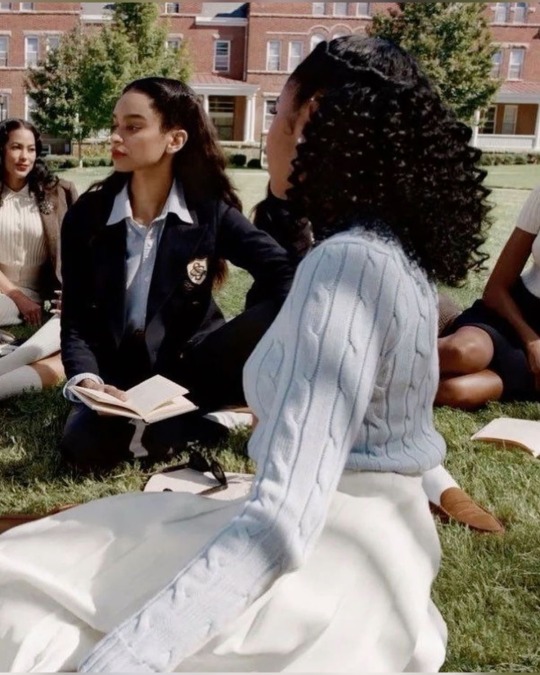



“Fallin' from my money tree, and it grow throughout the months”
Pile 1:
Shufflemancy -
Looking For You by Kirk Franklin
MY POWER by Beyoncé
Counting Stars by OneRepublic
Queen of Wands, The Sun, The Fool, Death/Rebirth, Monk/Nun, & Teacher
In order to attract the most financial abundance in your career, you must use the wisdom you have gained and share it with others. I am seeing for some of you that you are religious or belong to a certain faith. You could work as a guidance counselor or doing charity for the church/mosque/temple, etc. While others are spiritual and/or believe in manifestation. You could be a someone who overall has a positive outlook on life and wish to share your joy and prosperity with others. You could believe that when you are rich in spirit, you are rich in life. If you have patience and like to interact with other people, you could work as a teacher for children or for young adults. You instill a great sense of confidence in others! People value your kindness and your optimistic demeanor. You will find the most fulfillment in help turning other people’s life around and overcoming challenges. Helping the less fortunate and those who lack equal access to economic opportunities will overall transform the path of your career.
Jobs: Teacher, professor, guidance counselor, success coach, non-profit organizer, dance instructor, music teacher, training & development specialist, officiant, pastor, mortician, funeral director, & youth group leader
Pile 2:
Shufflemancy -
Courtside by DVSN ft. Jessie Reyez
Just Do It by Swoosh God
Give Her Some Money by Maliibu Miitch
Two of Pentacles (Change), Nine of Wands (Strength), Six of Wands (Victory), Eight of Wands (Swiftness), Healer, & Athlete
Your most abundant career will have you booked and busy! I’m seeing that you guys should work in sports, if being an athlete per say isn’t your thing, then I see getting a job that’s along those lines will provide you with the most success. You could be fit and in shape, so being a personal trainer as well would help increase your income. I’m seeing you guys living a comfortable, plush life. You can take flights or even jets to fly in for work, you will do a lot of traveling for your job. If you wish to settle down and have a family, then this pile is not for you. This pile is for my single rich aunties/uncles who don’t wish to have kids. For some of you, I see you working in sports medicine or work in health care that pertains to injuries such physical therapy or rehabilitation. I also see this as working as a therapist, psychologist, or counselor. You help people regain strength and courage in the endeavor of pursing their goals. You are also someone who works fast and is always on time. You enjoy a competitive or diverse environment that can keep you on your toes. Stagnancy slows you down and practical jobs are not for you, you require something that offers something different each time and can also stimulate your mind.
Jobs: Sports Medicine, physical therapist, counselor, doctor, surgeon, nurse, professional athlete, journalist, assistant coach, personal trainer, fitness influencer, transitional manager, & team psychologist
Pile 3:
Shufflemancy -
PERSIAN RUGS by PARTYNEXTDOOR
Super Rich Kids by Frank Ocean
Diamond Days by Cruel Youth
The Hierophant, Seven of Cups (Debauch), Four of Cups (Luxury), The High Priestess, Gossip, & Artist
You have a refined taste and keen eye for details. Pursuing a career in the fine arts or design would overall benefit your career goals. You have the ability to make people engage with their senses by creating art is visually intriguing. You make people gossip or talk about your work for it is mesmerizing. Some of you are a considered a prodigy and have a lot of potential if your skills have not been developed yet. You could also be comfortable with nudity or your pieces have included nude art. You are also intuitive to others desires and can bring people’s dreams into fruition. You could often hear “*gasp* How did you know my favorite flower was ___?!” or something along those lines. Since you are so creative and multitalented, you would attract the most financial abundance as a freelancer. Acquire a workshop or establishing an office in your home can help you get into a space where you are able to have amazing results. Avoid working at jobs that lack flexible hours and be careful of people who do not wish to pay you for your service.
Jobs: Freelance artist, photographer, interior designer, home renovator, painter, magazine editor, credits creator, graphic designer, art instructor, podcaster, jeweler, fashion designer, chef, & food blogger
Pile 4:
Shufflemancy -
Get MuNNY by Erykah Badu
Ribbon by Mariah Carey
Money, power, & glory by Lana Del Rey
Ten of Wands (Satiety), The Lovers, Nine of Cups (Happiness), Hedonist, & Prostitute
This is a complex reading so I ask you to bear with me lol. Some of you could be a sex worker or previously had a former career involving those aspects, it’s giving Sophie Rain honestly. You may look young for your age and this appeals to certain demographics… This is like when girls on TikTok showed when they tried different hairstyles at work when waiting and they got tipped or paid more money when wearing pigtails or braids. You may have noticed this yourself when trying to progress in your career. In order to attract the most financial abundance, you have to give into your alluring qualities, physically and mentally. For example, Dolly Parton’s role in “9 to 5” was significant in showing the power dynamics of women within the workplace and how men take advantage of them so they can gain access to wealth or power. Dolly played as a pretty, blonde, busty secretary who was accused of having an affair with her boss, who was actually sexually harassing her. She got her revenge with two other female employees and ended up taking over the company. Instead of feeding into misogyny or pedophilic beauty standards, I would suggest playing the game wisely and asserting your power and fighting for equal rights when approaching working in a male dominated field. Seduce and control but do not sell yourself. You would become a major feminist role model and others would love to hear your story on how you became so successful.
Jobs: marrying into money, house spouse, entrepreneur, ceo, secretary, sales, marketing, sugar baby, exotic dancer, sex work, phone operator, model, bartender, waiter, hospitality service, & DJ

#pac#pick a card#pick a pile#astro observations#astrology observations#astrology#manifest#manifestation#law of assumption#law of attraction#new year#goals#Spotify
352 notes
·
View notes
Text
It's been a hot minute since I looked at Canada's National Occupation Classification system. I learned about it when studying career counselling in grad school, and it's pretty useful in terms of job-hunting and getting information on what different types of jobs require and pay.
A friend asked me for advice about becoming a therapist so I went and looked. They redid it since I last visited, and oh man there are some chef's kiss decisions.
There are 9 top-level categories, with 1 being legislative and senior management, 5 being arts, culture, and sport, and 9 being manufacture and utilities. So I was looking for my old job's classification, which used to be 4153 - Family, marriage and other related counsellors. Knowing that made searching the government job bank really easy back in the day, because instead of searching "counsellor" "counselor" "psychotherapist" "mental health therapist" "clinical counsellor" etc etc etc to find them all, I just typed "4153" and hit enter.
Anyway, they redid the system and now that job is parked at 41301 - Therapists in counselling and related specialized therapies. Here's the tree to get there:

Cool cool cool. It's tidier, even if the occupations are still a bit messy. (When I dropped out of the field, the different counselling subdivisions were tapping their toes impatiently waiting for the provincial government to let them form their own professional regulatory college. Which still has not happened. Last week my shrink said he'd got an email from the College of Psychologists announcing that it would be gathering all the smaller counselling fields into its own downy breast instead. I have no idea what's happening anymore.)
Anyway. I scrolled down to another job I once worked and HAHA WHAT

Yes. There are only three sub-units of category 44:
Nannies:

In-home caregivers:
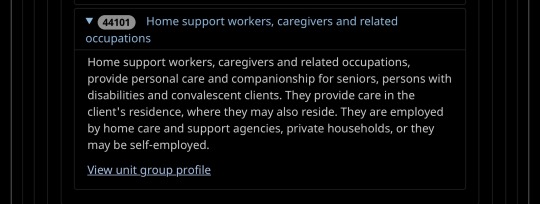
And,
Combat specialists
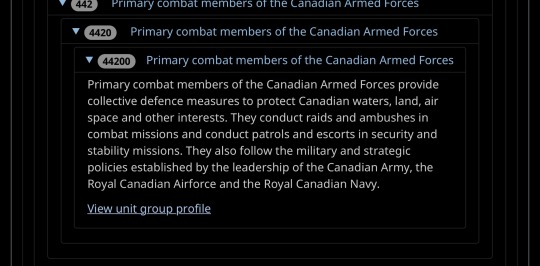
I find this grouping of professions hilarious, appropriate, and deeply validating. No notes. 🧑🍳👌💋
#staranise original#advice on therapisting#that was the job I still have a scar on my arm from#i badgered my supervisor to death to get that fucking gentle self-defense course because of now unsafe it felt sometimes#man that job broke me#only good thing about that year was my cat and nacho movie night with my roommates#here's to never having to live that year again#sláinte and amen
182 notes
·
View notes
Text
Everyone’s posting their Octonauts OC so I’m gonna reintroduce mine!

Ferris
Early to Mid 30’s, Cis, Gay, He/Him
Species: South American Grey Fox
Occupation: Octonaut, Therapist, Meteorologist. Aboard the octopod, he tracks the weather weeks in advance so the Octonauts know what to do in future situations. He also holds therapy sessions, for the crew (something they never know they needed considering how taxing this job is)
Personality: Ferris is generally very friendly and welcoming, he’s a social butterfly, he enjoys talking to everyone on the Octopod. Especially Captain Barnacles and Bibi He’s very passionate about his work and is ready to lend a helping hand at any chance he gets.
However, he has heavy imposter syndrome and can fall into fits of self doubt when he fails at something, and he has little patience under pressure and can snap a bit. But besides that he’s really good at controlling his temper, often smiling even when he’s angry. (Think Shinobu from Demon Slayer.)
Ferris is also very compassionate and patient when need be, as a kid he was always taken care of by his older brother (his parents couldn’t because their jobs kept them busy throughout the day.) And as a result, he wants to help others.

Bibi
Late 20’s early 30’s, Non-binary, Bisexual They/Them
Species: Gray Rabbit
Occupation: Octo-Agent, Bibi is a search and rescue specialist stationed in Alaska, they run a station near a bunch of mountains. They help rescue creatures after storms, mudslides, and avalanches.
Personality: Bibi is socially awkward, they like life in the mountains of it means being alone, they tend to self isolate which isn’t good for their mental health, but they don’t really mind it. They aren’t completely isolated from others though, as being an Octoagent meant having to occasionally call on the Octonauts for help, and Bibi really likes them. Especially Barnacles and Ferris.
If Bibi is comfortable enough, they’ll stand or sit closer to someone or even talk a bit with them, but they prefer to be quiet.
Bibi does love very deeply and expresses it through art and letters, they seem completely socially stale but that couldn’t be further from the truth. They’re very emotional but they keep it to themselves out of fear of being too much to deal with.
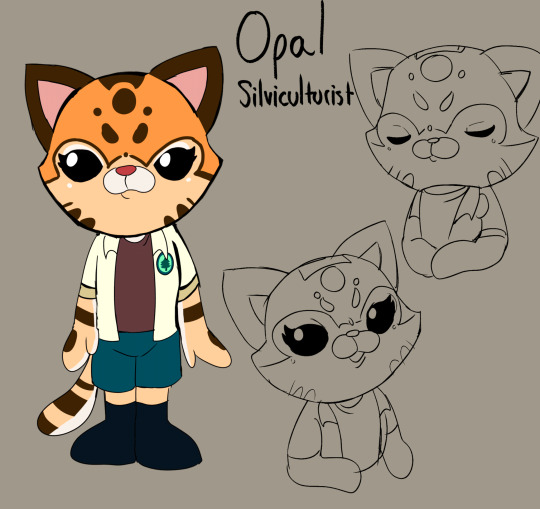
Opal
Late 30’s Cis, Lesbian, She/Her
Species: Ocelot
Occupation: Octo-Agent. Opal is Silviculturist for the rainforests of South America, she takes care of the upkeep of the area around her tree house station. She makes sure animals and plants are safe, dhe cleans up any mess left behind, protects it from deforestation. Etc.
Personality: Opal is extremely nurturing and gentle. She has loads of love to give, she’s not the most talkative out there but she’s always happy to listen and learn. She especially enjoys the company of Selva, who has been dear to her ever since they were young. (They may or may not be a thing :))
She’s always been quiet but kind as long as she can remember, she never wants anyone to feel alone. She also has a protective side as she never wants anyone to get hurt. She’s a cat of prey but she’s personally vegan. She doesn’t have a mean bone in her body, she’s especially fond of kids.
50 notes
·
View notes
Text
ANALYSISSSS TIMMEEE
Call me a reacher, but actually I’m a preacher. About to make y’all learn this lore like I’m your teacher. I don’t care if you get dreary, y’all gon hear this theory.
I know y’all want the paper crane cult to be evil , but I think it’s the other way around tbh. the cranes probably aren't bad people, they believe what they're doing is correct.
They also have a reason to do what they are doing (or at least they think they do). Not sure exactly what it could be, since non-fastpass literally have crumbs of info on them, but the way I see it is they have a “being mean to be kind” mindset.
Don’t get me wrong, they know turning people into phantoms is a horrible thing to do. They are aware their actions are harmful, both through self-reflection and outside opinions. But I believe their organization is either going to end up being the lesser evil or it’s a selfish sacrifice for a greater goal.
When I say “outside opinions”, I’m referring to the other two groups currently working against (?) the paper crane cult. At least one of these mysterious groups is trying to shut down everything the cranes are doing. The other one’s goal can be anything tbh. They might want to take over, they could know the folklore behind phantoms and are more knowledgeable than the cranes are. Regardless, their interference is obviously not helping the cranes which is why they are in hiding.

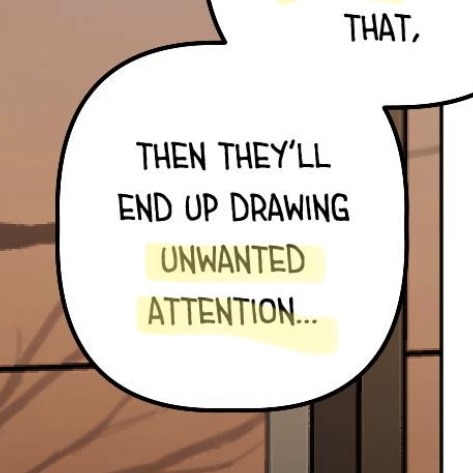
Also, since we’re on the topic, I don’t believe the ‘stunt pulled in savannah’ had anything to do with Ashlyn and the main cast. We’ve been told that this isn’t the first time they’ve pulled people into the phantom dimension. So why would something they do constantly be considered a stunt?
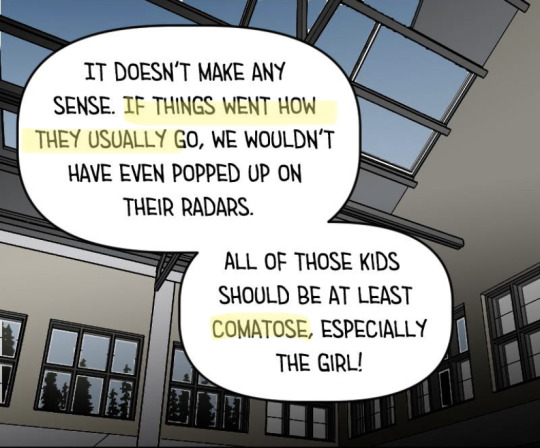
The group is experienced enough to be able to predict the physical reactions the main cast’s bodies should be undergoing. But when things don’t go to plan, instead of revising their studies, they automatically understand that the children are anomalies. Them being anomalies is important for my next point.

Let’s go back to the basics. The cults symbol is a black paper crane. Cranes symbolize peace, while paper by itself represents newness, life, and growth. Together, this can be interpreted as a goal for a new era of peace and the recovery/growth of society. This could be the boss trying to come to peace with a situation of his past and his end goal of the phantom research is the only way he can cope/try to solve whatever happened.


But, paper cranes as origami can also be given a meaning. 1000 paper cranes are needed in order to have ONE wish granted. The origins of this belief tie back to prayers for recovery and good health. Which links back to my earlier statements about the goal of the cranes being to help something (society, the boss, a person of the past) recover or improve in health/ability.


Hear me out now. What if, instead of using paper cranes, the crane cult uses humans as their offerings instead? Say they need 1000 experiments in order to make a break through in their research of the phantom world. Remember earlier when I stated the main cast were anomalies? What if they’re experiments 994-1,000? Ashlyn, who fosters the closest connection to the phantom dimension out of everyone else, is the 1,000th person. She’s the specialist one, and she will be the breakthrough the cult had so desperately been searching for.
Going back to the orginally topic of the cult not necessarily being evil, there is honestly an odd amount of symbolism that surrounds the members.
In chapter 44, the boss stands at a window reviewing the situation with a member of the paper cranes. In the window, there is a sparrow sitting on a bare tree. This detail can be overlooking very quickly, but the fact it comes up in 2 panels and is the only thing in the window is odd.

So, after some research, I learned that sparrows are actually a sign of good luck! Furthermore, the sparrow is outside.

A sparrow leaves when a family member has died. People need time to recover after the death of a family member. Given my earlier points, are the dots connecting? Perhaps the boss has recently experienced a death (or someone important to him/he himself is very sick) and he is doing everything he can to restore their health. Even if that means others have to die and suffer in order to save them, or even himself. This would be the selfish goal I was talking about earlier.
Or maybe it’s not just one person who’s sick/dead. Maybe it’s society as a whole? The paper cult wants to save people from their own greed and division and make everyone harmonious and equal.
If everyone became a phantom, war and conflict would cease to exist. From what we’ve seen, the phantoms don’t attack each other. Unless they are working together, they completely ignore each other.


In the case that the cult is attempting to save us from ourselves, than wouldn’t that mean the organization is the ‘lesser evil’ I was talking about before?
The charater designs of paper cult members are also very important to this analysis/theory thing.
I don’t know his name, so I’m gonna call him baldy, but look at his piercings. He has two on his right eyebrow. In some cultures, this represents a rite of passage in someone’s life.


The three stages of a rite of passage of separation, transition, and the return. This process can apply to so many theories and events in sbg that I really don’t know which to pick for this post 😭. To save time, I’ll leave it up to the reader. But I’m always open to hearing everyone’s thoughts on this(even if it doesn’t have anything to do with this post’s specific topic).
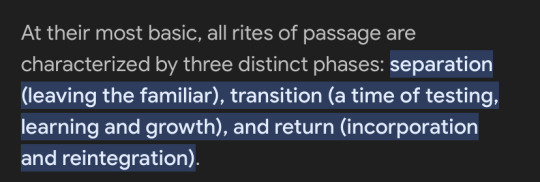
Now, let’s look at jasmine. She was the funniest to research lol. Her double piercing is on her right ear. This symbolizes life at jeopardy or the prevention of a disaster. HELLO? This covers literally all of my ealier points in one go.

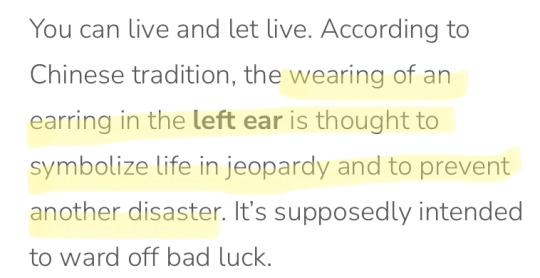
Her tattoos also are quite interesting to look at too. OKAYY so I’ve seen the theory about how this specific tattoo is actually these biggies and it does make sense. However when I was originally putting this analysis together, no one pointed it out yet, and I went in the opposite direction. It still applies to my connections though so.
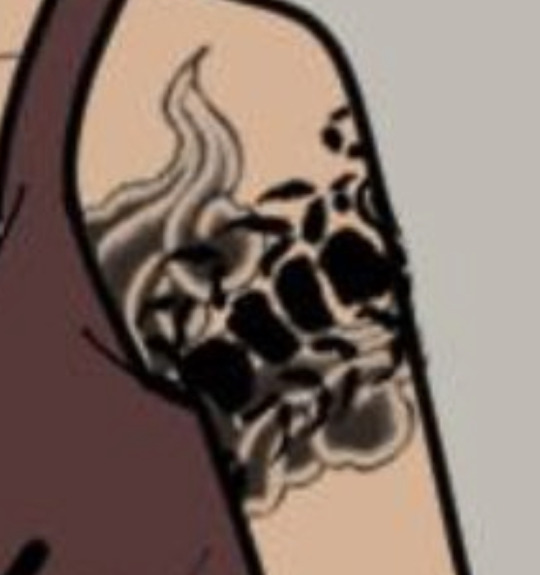
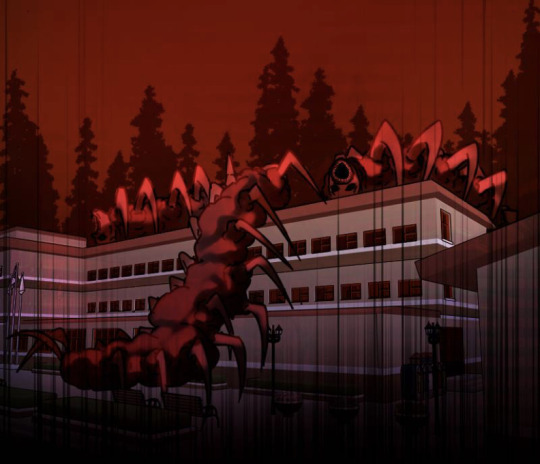
Originally I thought this tattoo was a centipede, which symbolize good luck, healing, and energy! All three add onto my ealier points.

I’m not 100% sure what these are but it looks like smoke to me.
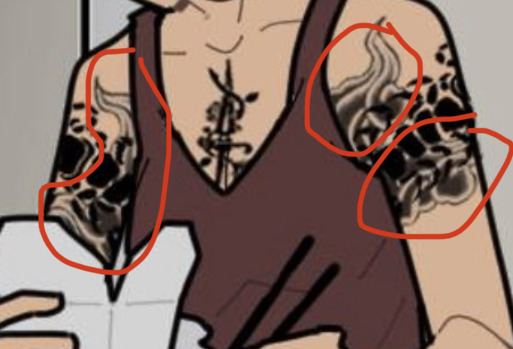
There are two different thing smoke can symbolize. It can hide a situation or cloud judgement. The clouded judgement could be the emotion that causes the cult to make their selfish sacrifices or our judgement of the cult and assuming their bad people without context (even though they’re kidnappers 😓). Smoke is also important in artworks and ceremonies that deal with sacrifices. In this case, the human sacrifices being used to further the research/domination of phantoms.


This tattoo of what appears to be a snake wrapped around a dragger or staff represents medicine and rejuvenation. It can also represent overcoming a challenge or fear.



I also find the quote, “snake shed their skin” interesting because in a sense when the humans become phantoms they’re shedding their skin and becoming a new being. Just saying 🤷♀️
I’m too lazy to write an ending to this long thread but hopefully you guys see the point I was trying to make. Yes I know I’m reaching but also it makes too much sense and I wanted to share. Anyways feel free to add onto this or disagree with it. I’m curious about other peoples perspectives on this!
#sbg#school bus graveyard webtoon#school bus graveyard#schoolbus graveyard#sbg (webtoon)#paper crane cult#paper cranes#theories
113 notes
·
View notes
Text
Tree Healthcare Service: A Beginner’s Guide to Proper Tree Care
Trees are not just decorative elements in our surroundings; they are essential for a healthy environment. Providing shade, improving air quality, and supporting biodiversity, trees contribute significantly to our well-being. However, to maintain their health and longevity, trees require consistent care and attention. This is where Tree Healthcare Services play a crucial role.
Tree care involves more than occasional watering. Proper nutrition, disease prevention, pruning, and soil maintenance are all key components of a comprehensive tree healthcare routine. This guide will provide beginners with actionable insights into essential tree care practices, ensuring your trees remain strong, resilient, and beautiful for years to come.
Why Tree Healthcare Services Matter
Investing in Tree Healthcare Services is vital for maintaining a thriving landscape. Trees, like any living organisms, are susceptible to environmental stress, diseases, and pests. A lack of proper care can result in weakened structures, reduced growth, and even premature death.
Professional tree healthcare involves regular inspections, targeted treatments, and preventive measures that address potential threats before they become severe. Arborists use specialized techniques to assess the health of trees and recommend appropriate interventions, such as soil amendments, pruning, and pest control.
By integrating professional tree healthcare into your routine, you can prevent costly damages and ensure that your trees continue to provide ecological and aesthetic benefits.

Understanding Tree Nutrition and Soil Health
Just like humans need a balanced diet, trees require essential nutrients to grow and thrive. Soil quality plays a significant role in determining how well trees absorb these nutrients. Poor soil conditions can lead to nutrient deficiencies, stunted growth, and susceptibility to diseases.
Key nutrients for tree health include nitrogen, phosphorus, potassium, calcium, and magnesium. Conducting a soil test can help identify deficiencies and inform appropriate fertilization strategies. Organic compost, mulch, and natural fertilizers can enhance soil health and ensure that trees receive the nourishment they need.
Maintaining proper soil aeration and moisture levels is also crucial. Overly compacted soil restricts root growth, while excessive watering can lead to root rot. A well-balanced soil environment allows roots to access nutrients efficiently, promoting overall tree health.
Best Practices for Watering Trees
Watering is a fundamental aspect of tree care, yet it is often misunderstood. While young trees need frequent watering to establish strong root systems, mature trees typically require less frequent but deeper watering sessions.
The best watering approach is deep soaking, which allows moisture to reach the root zone rather than just wetting the surface. Early morning or late evening watering minimizes evaporation, ensuring trees receive adequate hydration. Avoid overwatering, as it can lead to fungal infections and weak root development.
Seasonal changes also impact watering needs. During hot summers, trees may require additional hydration, while in colder months, less frequent watering is necessary. Monitoring soil moisture levels and adjusting watering schedules accordingly will keep your trees in optimal condition.
Preventing and Managing Tree Diseases with Tree Healthcare Services
Tree diseases can significantly impact their longevity and appearance. Fungal infections, bacterial diseases, and pest infestations are common threats to tree health. Early detection and proactive management are key to preventing severe damage.
Tree Healthcare Services offer diagnostic assessments to identify diseases at their early stages. Common tree diseases include:
Powdery Mildew: A fungal infection causing white, powdery spots on leaves.
Root Rot: A disease resulting from overwatering, leading to decayed roots.
Anthracnose: A fungal disease causing leaf discoloration and premature shedding.
Preventative measures include proper pruning, ensuring adequate airflow around the tree, and using disease-resistant tree species. If a disease is detected, professional treatment such as fungicide applications or soil modifications can help restore tree health.

The Importance of Regular Pruning and Trimming
Pruning is essential for maintaining tree structure, removing dead or diseased branches, and encouraging healthy growth. Improper pruning can cause significant stress to trees, making them more susceptible to infections and pests.
The best time for pruning depends on the tree species and its growth cycle. In general, late winter or early spring is ideal, as trees are dormant and can recover quickly. Summer pruning can be done to remove weak branches and shape the canopy. However, excessive pruning should be avoided, as it can lead to unnecessary stress.
Professional arborists use specialized techniques such as crown thinning, deadwood removal, and structural pruning to maintain tree health. Regular inspections and maintenance help ensure trees develop strong, well-balanced structures that enhance their stability and longevity.
Protecting Trees from Environmental Stress
Trees face numerous environmental challenges, including extreme weather conditions, pollution, and soil degradation. Adopting proactive strategies can help trees withstand these stressors and maintain their health.
Mulching is an effective way to regulate soil temperature, retain moisture, and suppress weed growth. Applying a layer of organic mulch around the base of the tree provides insulation and prevents soil erosion. However, mulch should not be piled directly against the trunk, as it can cause rot and attract pests.
Strong winds and heavy snowfall can also damage trees, leading to broken branches and structural instability. Installing support systems like stakes or bracing can provide added stability for young or weakened trees. Regular inspections after storms ensure that any damage is promptly addressed, preventing further complications.
Conclusion
Caring for trees requires a combination of proper nutrition, watering, disease prevention, and environmental protection. By understanding the fundamentals of Tree Healthcare Services, beginners can take proactive steps to ensure their trees remain healthy and resilient.
Professional care is essential for maintaining strong and vibrant trees. Whether it’s soil assessment, pruning, or disease management, Tree Healthcare Services provide the expertise needed to promote long-term tree health. For expert tree care solutions, trust Tree Doctor USA to provide specialized services tailored to your trees’ needs. Contact us today to schedule a consultation and keep your trees thriving for generations to come!
#tree healthcare#tree doctor usa#tree health specialist#tree care service#tree nutrients#tree doctor
0 notes
Text
My Father Told Me
Author’s note: Zariel in Husbandry
Summary: He assesses Keed for the Bizzare time Loss his brother had. Then brings him to one of the Librarius Alpha legionaries he knows for mental assessment.
Warnings: Let me know if I need to add anything else
Tagged: @barn-anon, @bleedingichorhearts, @c-u-c-koo-4-40k, @egrets-not-regrets, @kit-williams
Tagged: @sleepyfan-blog, @ms--lobotomy , @thevoidscreams, @i-am-a-dragon34, @gra93fruit-blog
Zariel was in his Ultramarine Apothecary disguise with Keed came into the clinic. He not-watched as his brother signed in and got the check in paperwork completed.
He just so happened to be free to take Keed back with him to the room as he assessed his brothers condition. His physical condition was decent- but he was healing from something that had happened to him recently.
"You're well on your way from healing from a light concussion," Zariel tells Keed.
"... I don't remember getting into a scrap, or falling hard enough to get one." Keed says baffled, honest, and nervous at the same time.
Zariel keeps a professional demeanor on, but his brother is also an Alpha legionary and can read into even the slightest of tells and grows more worried.
"I've sent a message to Tarsol," Zariel says, "You have a check in with him in an hour."
"I see," Keed says with a slight wince. "Where?"
"The park near Main and cherry tree." Zariel says with a hum as he writes a few more things down.
"I'll head out once we are done here, sir." Keed replies.
Getting checked over by an Alpha legionary psyker is usually unpleasant. Getting very little mental privacy as they root around your brain is terribly unpleasant, but necessary, unfortunately, due to ... the loss of time he's experienced.
Zariel gives him a mostly clean bill of health, he's not supposed to go on patrol or missions until he's been cleared by a Chaplain and a Libarius. The Chaplain is going to take a while to get here. Ugh.
Alpha legionary Chaplains are very rare on Ancient Terra, then aren't all that common in any Future Era too. Very necessary for the running of the legion, like a specialists.
Keed gets to the specified park and flops down in the shade of the trees. The day is pleasant, sun with some clouds, enough wind to keep the heat from being unpleasant.
"Ah- hello there," A voice calls out and he cracks open an eye to look at the Salamander-looking fellow.
"Hi," Keed says, "I'm Kesto, what's your name?"
"I'm So'val," the Salamander responds, before using a seemingly normal sentence, but is a code phrase among Alpha legionaries.
Keed responds to the phrase correctly, and the pair of them have a pleasant getting to know each other conversation as the Librarian not-probes his brain to see what he can find in his head.
Once the happenstance meeting ends, So'val says, "It was nice meeting you, I hope we get to see each other again soon."
"That would be nice," Keed responds, "I like meeting new people and friends."
The Salamander nods before heading off. Keed waits for the other to be out of hearing range before swearing. He'd noticed that Tarsol had looked concerned. Fuck.
He gets a message from Zariel a few minutes, and winces, he's going to have to head to the nearest Alpha legion base to be checked and monitored.
He'd been fucked with psyhic-wise and that could mean that some of his Alpha training could activate, or twist, or he could have been embedded with a fucking bomb and they wouldn't know until they monitored him for a while and watched to see if anything was triggered.
He's not going to be able to be near Lana for months at this rate. He'd rather not be a potential threat to her, even if it sucks. He heads to the base and helps out with paperwork and training the younger brothers.
Keed wonders if there are any Primaris Marine Alpha legionaries or not. He knows that they are all hybrids, so it's likely that there are some with Alpharius and Omegon's geneseed within them.
#warhammer 40k#space marine husbandry sentience#space marine husbandry#warhammer#adeptus astartes#oc: Zariel#oc: Keed#oc: Talos#oc: Zarius#oc: Oryls#oc: So'val#oc: Tarsol
24 notes
·
View notes
Text
An American woman has been found chained to a tree in an Indian forest where she had been for 40 days, triggering a manhunt for her former husband.
Lalita Kayi Kumar, 49, was found by a shepherd in a forest near Sonurli village, Goa, after he heard her crying for several days.
Unable to speak following her rescue, she wrote a note that alleged her ex-husband had left her to die and that she had been without food for 40 days.
She also claimed she was administered an “injection for extreme psychosis which caused severe jaws locked and inability to drink any water. Need intravenous food later ... husband tied me to a tree in a forest”.
Ms Kumar was found with her legs tied to the tree but her hands unbound. A police officer said she was too weak to unchain herself. There were also reportedly marks from numerous other injuries on her body. She was wearing a see-through raincoat, an olive green shirt and worn-out brown trousers when she was found.
Police have registered a case of attempted murder against her former husband, who is accused of chaining her up before he escaped. Relatives of the couple are being interviewed by police.
Ms Kumar was transferred to Goa Medical College for specialist treatment after doctors raised concerns about her mental health.
A hospital official said: “She is out of danger, but she is suffering from severe depression and other mental health illnesses. We have found medical prescriptions in her possession suggesting she was on antidepressants.”
Documents found on Ms Kumar show that she was a resident of Tamil Nadu, a south Indian state, about 600 miles away from the forest where she was found. It is thought that she had been living in India for the past decade.
21 notes
·
View notes
Text
Customized Plant Health Care

With the proper care and maintenance, landscape plants can provide years of benefits. Plant Health Care (PHC) is a unique and multifaceted concept in plant management. The goal of our Plant Health Care Division is to attain and then maintain your landscapes overall health and appearance. We work closely with the local arboretums and pride ourselves on being up to date in all aspects of the tree care industry. The Plant Health Care Division utilizes the most up to date, safe, and effective preventative and curative methods on all of our customers’ properties.
#tree arborists#tree care#tree care specialists#tree health#tree pruning#tree bracing#tree removal#tree trimming#tree trunk removal#tree preservation#tree services#stump removal#tree spraying#tree care chicago#tree removal service in my area#tree roots removal#tree cutting#lawn care service#stump grinding#tree expert#tree care service#service#tree removal services#tree trimming service
1 note
·
View note
Text
How to spot poached slowpoke tails.
Slowpokes have no nerve endings in their tails, and very good regenerative qualities, capable of growing back within a few months of losing it. As a result, slowpoke tails are a well known delicacy. But there are always those looking to make a quick profit at the expense of their pokemons health, and consumers need to be aware they aren't perpetuating this.
In an ethical slowpoke farm, they are allowed to roam the grounds freely and do as they please. Harvesting is done under anaesthesia, as there are some nerves close to the base of the tail, and once the tail is taken it is exempt from harvesting from 6 months, enough time for the tail to grow back and the body to recover and replenish the energy lost to regrow it. These tails have a mild, sweet flavour and a tender texture.
A big warning sign is the price. Slowpoke tails are a specialist delicacy and are priced accordingly. If you're paying around 10000 pokedollars for a tail, it's most likely legitimate. Cheap slowpoke tails are a red flag.
Flavour is another warning sign. Slowpoke allowed to grow at their own pace and in a natural environment are sweet, tender and appetising. A tail grown in an illegal farm or poached will be bitter and tough due to the stress involved.
Slowpoke tails should be harvested no more than twice a year, and sold fairly promptly, though some are dried or smoked. If fresh slowpoke tails are being sold year round this is a SERIOUS red flag.
If the slowpoke tail is local, you can ask to see the farm itself. Slowpoke farmers tend to hold a lot of pride in their work, and a legitimate farm will be happy to show you around and let you see it for yourself. A good farm will have clean paddocks with plenty of trees and brooks, with secure fencing. The operating rooms should be clean and sterile, and the slowpoke themselves should be healthy, plump, and relaxed. If the paddocks are overcrowded and the slowpoke look thin and/or stressed, this is a red flag.
If they refuse point blank to let you in and offer no good reason, start looking into it further. This could be a red flag or it could be due to rustling. Don't discount this, but keep alert.
If you suspect a slowpoke battery farm, contact the authorities immediately, and do not attempt a vigilante raid. Some of these unethical farms have backing from organized crime (allegedly) and you could put yourself in danger. Do not try to be a hero.
271 notes
·
View notes
Note
Hi, any recommendations for desling with abnormal growths on a Torterra Tree?
Regular branch overgrowth is usually dealt with by the small Bug and Flying types living on a Torterra's back. If your 'mon doesn't have other 'mons living on their tree and they've been evolved for a while, it's worth a health checkup! Healthy Torterras should have a small ecosystem on their backs, and excessive growths might be a sign of a lack of Bug-Types eating it. If you live in the city, and they don't get enough time out of their ball, that might cause some issues in developing their trees.
I recommend you take 'em to your Poke-Vet, and a Grass-specialist Pokegroomer too. Many groomers can safely prune a Torterra's tree, just make sure they don't remove any nests or Wurmples that might be there!
41 notes
·
View notes
Text
Hey Y'all I rarely post stuff of my own but I'm in need of help. I've always had a hard time asking for help but I've become desperate. I just moved out of my toxic Indian household at 27 with no savings because my mom would take all of my SSI checks and huge chunks of my paycheck that I worked for. I'm having a lot of health issues and chronic pain flare ups. I work at a college but I've been put in an administrative role until I can get my health in order. I don't have as many hours but now I can actually see doctors. My family was preventing me from getting help, from seeing doctors or getting my meds on time. I have PTSD and I can't drive because of it. I need financial help. I've been approved for SNAP but I'm waiting on my EBT card. I'll be going to a food bank tomorrow to get some food but that still leaves me with no funds to buy medical marijuana. I've been experiencing nerve pain the last 2 months and hormonal migraines for a straight month. I live in FL and it's super heavily taxed and I'm having trouble getting my muscle relaxers re-prescribed because I need a specialist to prescribe them for my insurance to keep paying for them. I have no other proper pain management rn. Please help me. I know the global climate is at its worst right now and I feel guilty making this post with everything going on in Palestine but that doesn't change the fact that I NEED HELP.
If you can help in any way please, even suggestions on what to do better with e-begging would be greatly appreciated.
My Cash@pp: $ButtPirate27
I can also tutor you online in Algebra if you need a math tutor I can help with Pre-Calc and Trig too but I'm far too rusty on Calculus to tutor but I would gladly tutor for any financial help.
If you want more info on my situation I don't mind sharing. I've been on Tumblr for 11 years and barely ever posted about my own life. I know that there are definitely people here willing to help but there have also been a fair share of scammers so I understand the hesitation. Here's my cat Ares, something cute to look at. I want to get him a cat tree too and a bin to make a housed litter box for him.
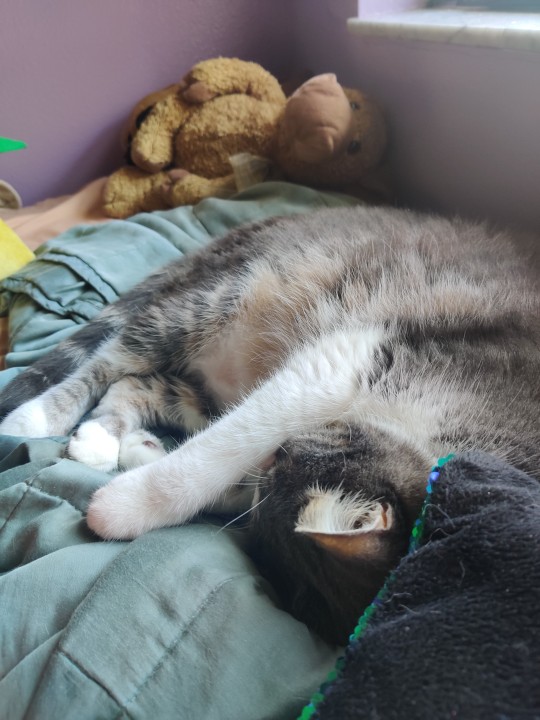
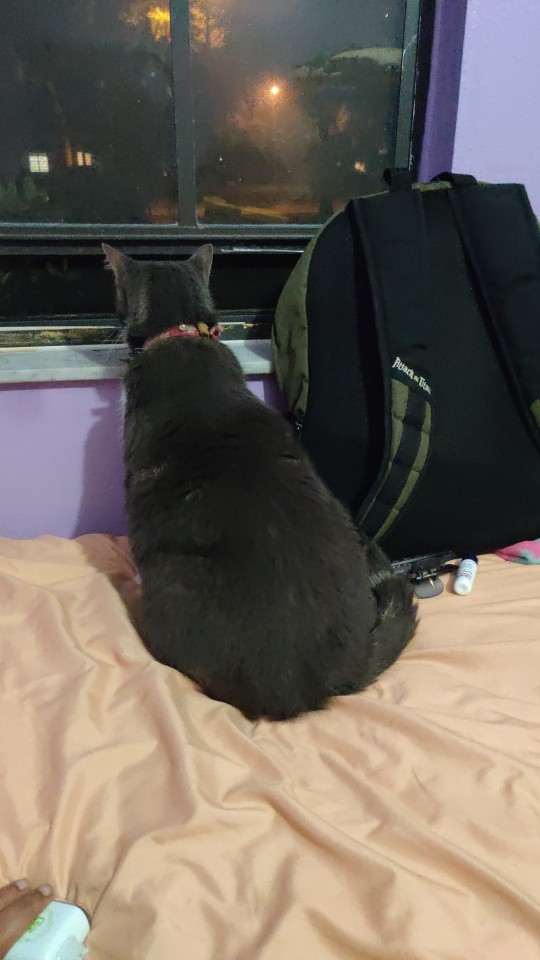
#mutual aid#help need#my post#moving out#toxic family#financial abuse#financial aid#e-begging#pain management#new start#low funds#will tutor in algebra for money
29 notes
·
View notes
Text
Oops so that was a while!
Nightfall Update ahead of the holidays! (and a push for myself to, blog again). some details under the cut but tl;dr it's been a while but im back here and trying to be back here! with new stuff! And updates to certain things too damn!
Rough year for me! Probably for many people really :(
good stuff first
uhhh biggest news is that through all the bullshit i was able to participate in the clone bang. The last 6 weeks of my life have been so stressful bc I had to write like 80% of the damn fic. It's a 125k monster of a fic that i feel quite proud of, the last 45k of it was written in literally the last two weekends. upcoming details in a promo post as soon as I hear back from my last artist <3
With that, though, my creative writing juices thoroughly uh. revitalized. to recovene followers: ezra chapter is coming soon :) that was a mean cliffhanger, i did not expect for my brain to literally commit mutiny :( sorry
I hope to have that done before bang posting starts (December baby here we come)
uhhhh only other thing is I am attending sanfrancisco expo ! lookin forward 2 that as well.
some generalized health stuff. the heat stroke i suffered last year was apparently maybe not a heat stroke (noted by the fact I was consistently worsening) and that sentence is still terrifying to me bc as i recall i couldnt fuckin read or turn around without wanting to fall over for like a month and a half there. But. whatever. It was a slow decline for a while, I was still getting some stuff out, but eventually, the amt of pain i was in overwhelmed me in june n it consumed me whole from july - august with slow improvement happening from then on.
it took me. quite a long time to see a specialist (and it was originally going to be longer! haha!) , but i've been seen. and am on treatment. and it sucks bc flashing lights still kill me (including literally shadows of the setting sun through a line of trees and a CEILING FAN are you KIDDING ME) and migraines r like. my best most toxic friend <3 it's so overrrr. We do not know what happened beyond my facial nerves just deciding to go balling insane. L. or what started that. L. But its finally getting better!! yay. we're so back.
to the ppl who've reached out 2 me / tagged me / putstuff in my inbox in ao3 or thought about me ;w; bro.. thank you !!! it killed me all the time bc it was like. I wanted to participate!! I want to have fun!! but the amt of energy things took. insane. but it was nice to be thought abt regardless. I want to be back now and have fun again. have a lovely night <3
8 notes
·
View notes